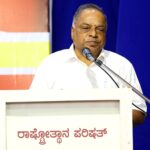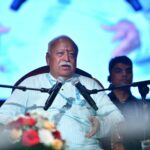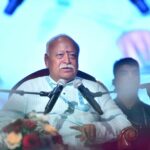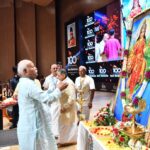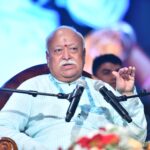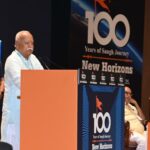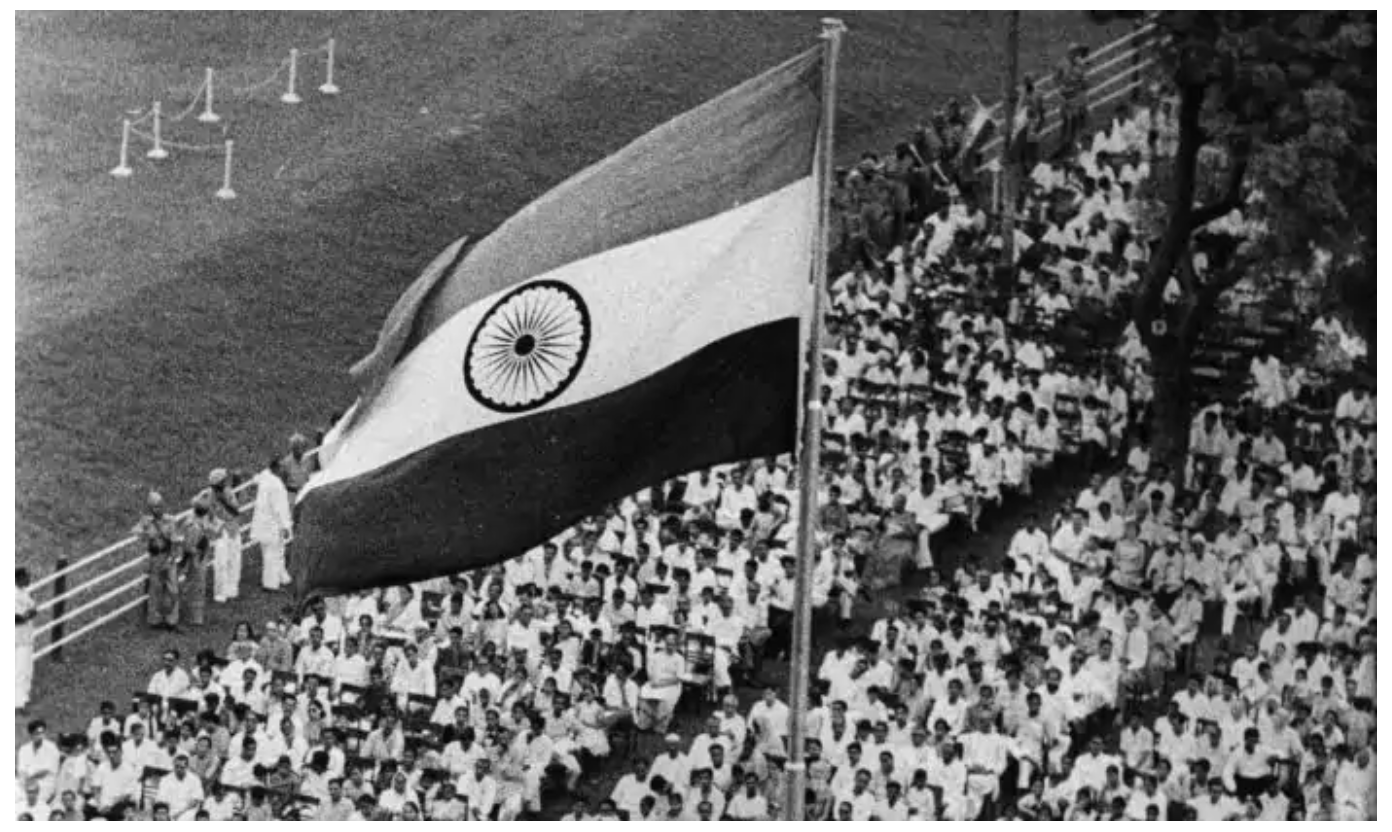
A Historic Occasion to look Back and Forward in the National March to Self Realisation
– Dr. Ragotham Sundararajan
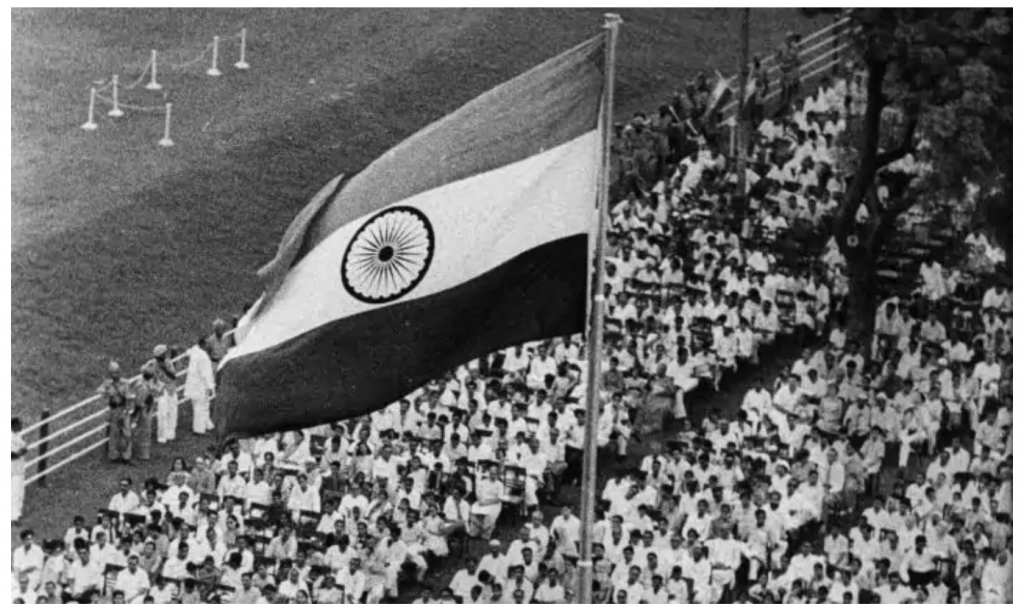
Overview
Seventy Five years as a Modern Republic is an important milestone and achievement in any country’s history and journey. It is the same for India, that is Bharat, which is an Ancient Culture and Civilisation marching forward in its quest for Self Realisation and Free Self Expression. Here, on the occasion of Swarajya75, we look back and forward at the great journey of India, that is Bharat over the last several Centuries.
The long and varied Civilisational Journey of India, that is Bharat, is a story yet to be told in it’s true breadth and depth. Previous attempts of the last several decades by Academic Historians with a Marxist bent of mind, have left this job unfinished and unsatisfactory, falling short in many respects. There is a need to research and retell this history from a truly Bharatiya perspective with rigour and substance. #Swarajya75 is a good opportunity to start that process.
Bharat in the last Five Centuries Before 1947
Bharat was a flourishing nation during many centuries of the second millennium as shown by the work of Angus Maddison, the OECD economist. However, Bharat suffered repeated invasions by Islamic invaders, be it Arabs, Turks or Mongols, which set in motion socio-cultural and politico-economic disruptions whose full ramifications are yet to be understood. However, it is clear that when the East India Company set its foot in Bharat in the early 17th Century, Bharat’s Socio-economic and Political structures were already in a weakened and fragmented state. This paved the way for the Company to rapidly establish its presence and spread its influence in many parts of Bharat by the end of the 18th Century.
Pre-Company Bharat and Its History
Starting with the invasion of Sindh and Multan by Muhammad Bin Qasim in 712 CE, Bharat suffered repeated invasions by Islamic armies over the next five centuries many of which established their kingdoms in different parts of Bharat, such as the Bahmani, Bengal, Gujarat and the Delhi Sultanates, culminating in the rule of Mughal kings in Bharat in the 16th Century, starting with Babar in 1526 CE. Hindu kingdoms of Bharat, be it the Rajputs, Solankis, Sikhs, Ahoms and Marathas, fought these invaders incessantly and valiantly because of which the physical extent and duration of the Islamic kingdoms varied from short periods to several decades.
One of the strongest fightbacks against the Islamic rulers was by the Marathas led by Chatrapati Shivaji Maharaj who established Maratha Empire in Bharat in mid-17th Century. Well before Shivaji Maharaj, the Cholas of Tamil Nadu and the Vijayanagara Empire, especially that of Krishnadeva Raya, were some of the most glorious empires of South India which were unsullied by the invasions.
After the Advent of East India Company
The East India Company came to Bharat to do trade and commerce which it did increasingly through the 17th and 18th Centuries. After the Battle of Plassey in 1757, Company rule in Bharat was established fully and formally which continued for the next 100 years. After the War of Independence in 1857, in which people of Bharat from many parts of the country participated, the rule by the British government of the Queen was established in Bharat, resulting in the British Raj.
British Raj in Bharat was exploitative and extractive in nature, underpinned by racist assumptions of civilizational supremacy of Europe and economic and cultural backwardness of Bharat. It drained the nation of its resources, impoverished the population and killed local industries by reckless imports and taxation policies. People of Bharat increasingly became opposed to the British Raj during the late 19th and early 20th Centuries.
Fighting for the Eviction of British Raj
Continuous fighting against the British occupation forces was witnessed in Bharat since 1857. Revolutionaries such as Tantya Tope, Baghat Singh, Raj Guru, Sukh Dev, Chandrasekhar Azad, Madan Lal Dingra, Veer Savarkar, Vanchinathan and many others participated in armed struggle against the British. Netaji Subhash Chandra Bose founded the Indian National Army to bolster Bharat’s fight to evict the British. Bal Gangadhar Tilak also provided the leadership in the early part of this struggle for Independence.
Mahatma Gandhi, who was practising law in South Africa,returned to Bharat in the early 20th Century, and got involved in the opposition to British Raj, being inspired by Gopal Krishna Gokhale. With Gandhi’s leadership, the struggle for Independence took a different characteristic and turn. It became a Mass movement based on non-violence, in which ordinary people of Bharat participated. Non-cooperation movements, Satyagrahas of various kinds, rejection of British imports into Bharat and finally the Quit India Movement in 1942, were organised by the various leaders under the mantle of Gandhi’s leadership.
In the early 20th Century, the separatist sentiments expressed by some of the Muslims of Bharat, represented by the Muslim League became stronger resulting in the Khilafat agitation and direct action which lead to the killing of thousands of Hindus by Muslims. As this was not dealt with through strong action by the State and Society, when the time came for Independence from British in the post World War II period, demands for a separate Muslim nation grew, resulting in the formation of Pakistan, a theocratic Islamic nation by carving out pieces of Bharat which had Muslim majority areas. Partition of Bharat into India and Pakistan led to violent and murderous clashes in which many hundreds of thousands died and millions were uprooted from their homes.
Modern Republic of India, that is Bharat
In the aftermath of the traumatic Partition was thus born the Modern Republic India,that is Bharat as a democratic, parliamentary democracy with universal suffrage. Jawaharlal Nehru became the Prime Minister of India. The assassination of Mahatma Gandhi by Nathuram Godse exacerbated the Hindu-Muslim divide in the newly born nation of India.
Post-1947 – Establishing a Modern Republic
After Independence, the Nehru-led government of India, followed policies that were imitations of European Socialism and Secularism. Focus was on Industrialisation along the lines of Soviet Union and the Indian version of Secularism in which Religious minorities were given privileges and concessions that were denied to the majority Hindus. Military strength and Rural development were sidelined. Overbearing, inefficient and at times corrupt bureaucracy ensured that economic progress in the country was not keeping pace with the expansion of the population.
As a result of these policies, India’s potential to grow into a strong and prosperous nation was not fulfilled although many large scale industries and public sector companies were established resulting in some employment for the people. India had to suffer a military defeat by China in 1962. This precarious situation continued till the 1980’s. One of the highlights of Independent India’s history is the formation of Bangladesh as a separate nation with active support from Indian Military and political leadership. Previously this part was East Pakistan.
There was also the temporary shut down of democracy in India due to the Emergency promulgation by Prime Minister Indira Gandhi in 1975 which lasted till 1977. Countless Indias fought the Emergency and were jailed.
Recent Decades
Since the 1990’s, there is a realisation in India that the Economic and Political approaches to governance and nation building that were followed in the 50’s – 80’s did not really produce the outcomes that were desired. The Planned Economy and Licence Raj type of policies ended up stifling the inherent enterprise of the people of India which, as mentioned earlier, was an Economic Power during many centuries of the 1st and 2nd millennium. Hence, beginning in the 90’s, the Indian Nation started to pursue policies of economic reform and liberalisation whose positive results are beginning to be seen presently. India’s GDP, workforce participation, literacy, food production, technological development, basic nutrition for its children, life expectancy, military strength, all these parameters are showing encouraging and impressive improvements in the last three decades. Today India is a Military and Space Power.
There is also a sense of appreciation and support for self expression and self reliance by the people of India, that is Bharat. These sentiments for expression of the Sva or unique national identity, were strongly expressed before by the likes of Sri Aurobindo, Swami Vivekanda and Mahatma Gandhi.
Looking to the Future
Ancient Bharat had many achievements in the fields of Education, Mathematics, Astronomy, Metallurgy, Chemistry, Philosophy, Medicine and Health despite the many invasions and colonisation of the last several centuries. Modern India is coming to terms with its past, present and future, while imagining a shared and bright future for her various citizens. There is a quest to draw from India’s traditional strengths while identifying and solving the shortcomings that are hurdles in the way of the Nation’s progress.
While India is evolving as a Nation State, other nations of the world are moving forward in their march towards progress, power and status. We in India are an important part of this global journey and are expected to play a critical role in the future well-being of all Humanity. India should further equip itself to play that destined Role with clarity and strength so that the Mantle of Global Leadership rests lightly and squarely on her glorious shoulders.
On the occasion of Swarajya75, We, the people of India, should look forward to being part of this August Journey towards our Self Realisation and Self Expression as a Modern Rashtra with Ancient Human Values of Harmony, Peace and Enterprise.
